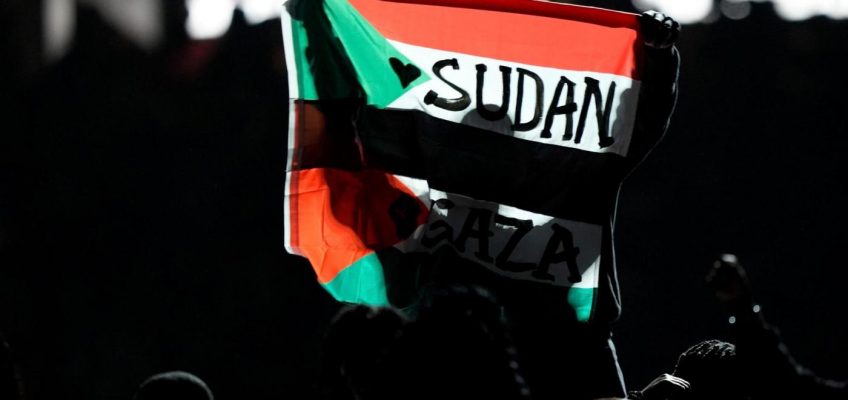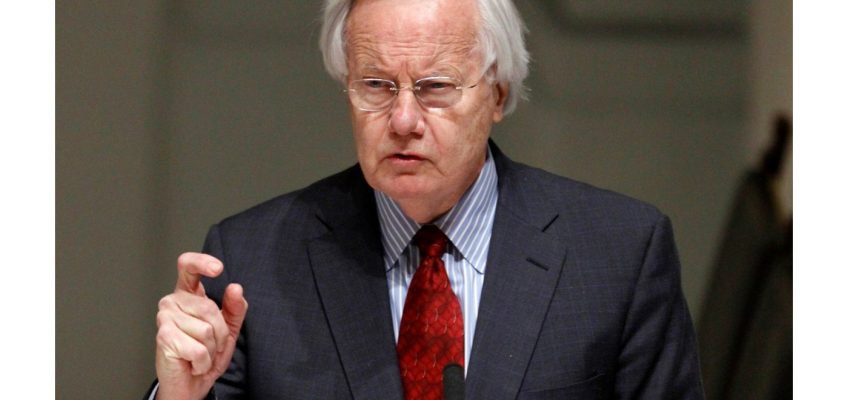By FRAZIER MOORE, AP Television Writer
NEW YORK (AP) — Bill Moyers, the former White House press secretary who became one of television’s most honored journalists, masterfully using a visual medium to illuminate a world of ideas, died Thursday at age 91.
Moyer died in a New York City hospital, according to longtime friend Tom Johnson, the former CEO of CNN and an assistant to Moyers during Lyndon B. Johnson’s administration. He did not cite Moyers’ cause of death.
Moyer’s career ranged from youthful Baptist minister to deputy director of the Peace Corps, from Johnson’s press secretary to newspaper publisher, senior news analyst for “The CBS Evening News” and chief correspondent for “CBS Reports.”
Anna Wintour is seeking a new Vogue editor-in-chief but will maintain editorial control
Prosecutors tell judge government plans to initiate removal proceedings against Kilmar Abrego Garcia
‘A purpose in this world’: Older adults fear elimination of program that helps them find work
As ICE raids intensify, how do employers know if their workers are legal?
Prosecutor says Sean ‘Diddy’ Combs thought he was above the law as he led a racketeering conspiracy
But it was for public television that Moyers produced some of TV’s most cerebral and provocative series. In hundreds of hours of PBS programs, he proved at home with subjects ranging from government corruption to modern dance, from drug addiction to media consolidation, from religion to environmental abuse.
In 1988, Moyers produced “The Secret Government” about the Iran-Contra scandal during the Reagan administration and simultaneously published a book under the same name. Around that time, he galvanized viewers with “Joseph Campbell and the Power of Myth,” a series of six one-hour interviews with the prominent religious scholar. The accompanying book became a best-seller.
His televised chats with poet Robert Bly almost single-handedly launched the 1990s Men’s Movement, and his 1993 series “Healing and the Mind” had a profound impact on the medical community and on medical education.
In a medium that supposedly abhors “talking heads” — shots of subject and interviewer talking — Moyers came to specialize in just that. He once explained why: “The question is, are the talking heads thinking minds and thinking people? Are they interesting to watch? I think the most fascinating production value is the human face.”
(Softly) speaking truth to power
Demonstrating what someone called “a soft, probing style” in the native Texas accent he never lost, Moyers was a humanist who investigated the world with a calm, reasoned perspective, whatever the subject.
From some quarters, he was blasted as a liberal thanks to his links with Johnson and public television, as well as his no-holds-barred approach to investigative journalism. It was a label he didn’t necessarily deny.
“I’m an old-fashion liberal when it comes to being open and being interested in other people’s ideas,” he said during a 2004 radio interview. But Moyers preferred to term himself a “citizen journalist” operating independently, outside the establishment.
Public television (and his self-financed production company) gave him free rein to throw “the conversation of democracy open to all comers,” he said in a 2007 interview with The Associated Press.
“I think my peers in commercial television are talented and devoted journalists,” he said another time, “but they’ve chosen to work in a corporate mainstream that trims their talent to fit the corporate nature of American life. And you do not get rewarded for telling the hard truths about America in a profit-seeking environment.”
Over the years, Moyers was showered with honors, including more than 30 Emmys, 11 George Foster Peabody awards, three George Polks and, twice, the Alfred I. duPont-Columbia University Gold Baton Award for career excellence in broadcast journalism. In 1995, he was inducted into the Television Hall of Fame.
From sports to sports writing
Born in Hugo, Oklahoma, on June 5, 1934, Billy Don Moyers was the son of a dirt farmer-truck driver who soon moved his family to Marshall, Texas. High school led him into journalism.
“I wanted to play football, but I was too small. But I found that by writing sports in the school newspaper, the players were always waiting around at the newsstand to see what I wrote,” he recalled.
He worked for the Marshall News Messenger at age 16. Deciding that Bill Moyers was a more appropriate byline for a sportswriter, he dropped the “y” from his name.
He graduated from the University of Texas and earned a master’s in divinity from Southwestern Baptist Theological Seminary. He was ordained and preached part time at two churches but later decided his call to the ministry “was a wrong number.”
His relationship with Johnson began when he was in college; he wrote the then-senator offering to work in his 1954 re-election campaign. Johnson was impressed and hired him for a summer job. He was back in Johnson’s employ as a personal assistant in the early 1960s and for two years, he worked at the Peace Corps, eventually becoming deputy director.
On the day John F. Kennedy was assassinated in Dallas, Moyers was in Austin helping with the presidential trip. He flew back to Washington on Air Force One with newly sworn-in President Johnson, for whom he held various jobs over the ensuing years, including press secretary.
Moyers’ stint as presidential press secretary was marked by efforts to mend the deteriorating relationship between Johnson and the media. But the Vietnam war took its toll and Moyers resigned in December 1966.
Of his departure from the White House, he wrote later, “We had become a war government, not a reform government, and there was no creative role left for me under those circumstances.”
He conceded that he may have been “too zealous in my defense of our policies” and said he regretted criticizing journalists such as Pulitzer Prize-winner Peter Arnett, then a special correspondent with the AP, and CBS’s Morley Safer for their war coverage.
AP writer Dave Bauder and Former Associated Press writer Robert Monroe contributed to this report. Moore retired from the AP in 2017.




